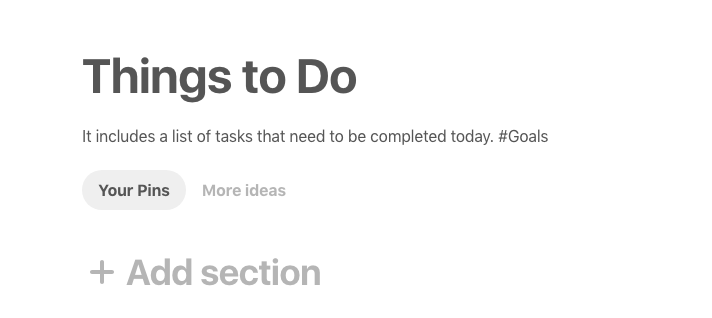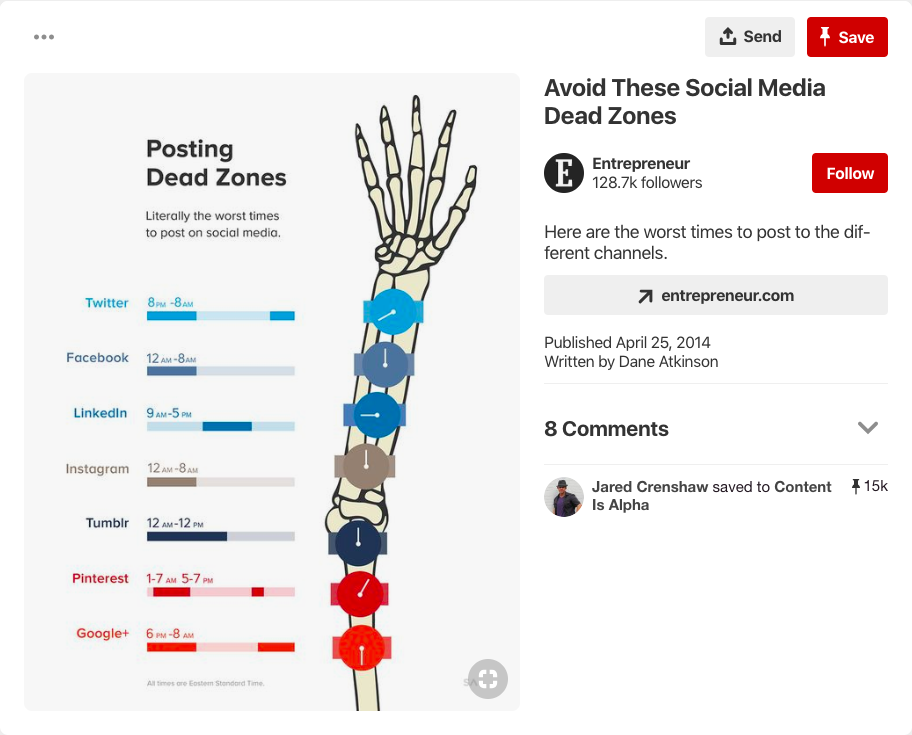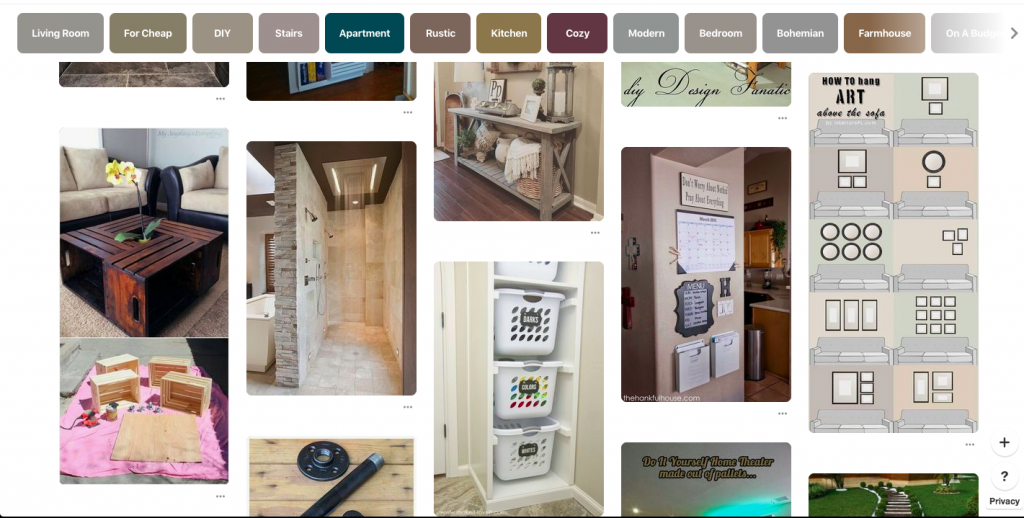
Table of Contents
Introduction
Pinterest makes the perfect platform for marketing your brand. It is not yet saturated (like Facebook or Instagram). Additionally, people use Pinterest to find items that they are actually interested in buying.
In fact, 87% of pinners have made a product purchase because of Pinterest.
It is a blessing for the marketers because of less competition and because of larger shopping carts (average order value for Pinterest stands at $58.95 while it is about $55 for Facebook).
But how do you optimise your Pinterest strategy to make the best out of this platform? We will answer this question for you in the coming section.
Here is how you can use Pinterest for SEO and content marketing:
SEO
Don’t overdo your hashtags
While hashtags can strengthen your SEO strategy, Pinterest doesn’t encourage using too many of them. In fact, your pin is more likely to get demoted if you have too many hashtags in place.
Hashtags on Pinterest differ a lot from those on Twitter or Instagram. They do not give a boost to your content in search results. In fact, most of these hashtags (ones in the board descriptions or profile names) are not even clickable.

On Twitter, using the common hashtags has a positive role in your marketing efforts. However, Pinterest works in your best interest when you use unique hashtags. While Twitter works on “Don’t forget your hashtags” ideology, Pinterest instead takes the “Don’t overdo them” approach.
So where do you draw the line?
Use minimal and relevant hashtags and place them only in your pin descriptions (that’s where they are clickable and hold relevance).
Using hashtags for contests and social media campaigns gives good results (as long as your hashtag is unique). For a complete guide on how to use Pinterest hashtags, check this out.
Key Takeaway
Using hashtags just because they exist is a bad idea. If you really want to benefit from them, restrict their use to contests or social campaigns.
Don’t skip pin descriptions
Pin descriptions allow you to use keywords optimally and make it easier for users to search your content. So many brands fail to invest in their description section which leads to poor visibility on the platform.
Again, the point is to not to “stuff” keywords. Pin descriptions which give a clear message and are enticing create value in search results.
Pinterest advises to “Write compelling, targeted descriptions”
And never ever leave them blank. Because leaving them blank means you won’t be found in search results.
Key Takeaway
When writing your pin descriptions, ensure that you don’t end up writing a “keyword only” description. Give a more clear picture of your brand with deftly crafted (and unique) words.
Time your pins right
Scheduling your pins at peak traffic hours is the key to getting more eyeballs for your content.
There are various tools that can help you in scheduling your pins. Viralwoot and Everypost are some examples.
By keeping a fixed schedule for your pins, you can eliminate the hassle of posting them on a regular basis. This comes as a blessing especially when you need to focus on other aspects of your marketing.
Also, when you schedule your pins, do keep in mind the peak usage time for your target audience. Creating pins when your audience is not logged in, lands your efforts in vain.
Key Takeaway
Pin scheduling is beneficial to SEO but make sure that you analyse the “active” time of your users before creating the schedule.
Content
Create pinnable posts with visual appeal
Pinterest is all about visually appealing posts. On a scale of LinkedIn to Instagram, Pinterest falls more on the side of the latter in terms of visual content.

In fact, it can be called as a visual search engine. And when you are using a visual based platform, it would be a mistake to use an average visual strategy (because it won’t work).
When crafting a visual strategy for such a platform, you need to focus on making your content more appealing. And that means you cannot compromise with the quality of your visual.
Key Takeaway
Visuals are not just Pinterest’s backbone, they are everything (muscles, ligaments, veins). Without a visual appeal, your pin will be lost to the visual purgatory.
Build upon the most viral content
Pinterest highlights the most popular data without having to look deeper into the platform. So it offers you the ease to build upon it.
What we mean is that you can use this “popular” content and add value by creating something that complements it.
This not only helps strengthen your content strategy but also gives a boost to SEO.
Building upon viral content helps you in grabbing attention more easily as you are adding to something that already has a viral tag. While it is not a good practice to always follow this advice, using this tip once in a while can give you a more visible presence.
Key Takeaway
Find out the pins which are most popular amongst your audience, give them a spin or add more value to them. Building up on already viral content can help you get results in less time.
Focus on creating vertical pins
If you notice the home page of Pinterest, you are likely to find more vertical posts than horizontal ones.

Also, vertically oriented pins look better on mobile screens. So if your users are logged in from their mobile devices, vertical images will have more appeal for them.
Pinterest advises to keep an aspect ratio of 1:2.8.
Since vertical pins are preferred by Pinterest, you can use this platform to share your infographics.
Key Takeaway
Use Pinterest for everything vertical. And don’t clutter too much information in one single visual.
Perform a deeper category search
Optimise your content for search queries by analysing what topics show up for your board category.
A category search gives you a better understanding of which topics are “hot” for your particular board category. Also, look for boards with maximum repins.
Category searches can reveal a lot about user behavior (because that’s how your user might be performing his search).
Additionally, this helps you in gaining a better understanding of your competitor’s content strategies.
Key Takeaway
A good analysis of category search helps you understand what others in your niche are doing and how well they are doing it. So if you really need an edge over your competitors, dig deeper into the search results.
Conclusion
Pinterest is the hero that all marketers need (probably not the one they deserve).
To get the most out of Pinterest, you need to remember that people pin interesting things.
Do remember that too many hashtags will negatively impact your pin. Blank descriptions won’t help you gain visibility and low-quality visuals won’t make your content shine.
Your Pinterest boards will be judged by their covers. And if you don’t invest in improving their appeal, your marketing strategy is not going to bring you the desired results. So Pinterest done right translates to visuals done right. Write that down and pin it on your boards.
Happy pinning!
Did we miss anything? Do let us know in the comments.
FAQs
How To Use Pinterest To Improve SEO?
To enhance SEO with Pinterest:
- Start by setting up a business account on Pinterest.
- Use relevant keywords in your profile description.
- Write clear and descriptive captions for your pins and boards.
- Use high-quality images and add alt-text.
- Regularly share pins and engage with your audience.
- Include relevant hashtags to increase engagement.
- Add a “Pin It” button to your website for easy sharing.
- Participate in group boards and collaborate with influencers.
- Monitor your Pinterest analytics to understand what works.
- Make sure your website is linked to your profile for more traffic.
How Do I Optimize Keywords On Pinterest?
To optimize keywords on Pinterest, start by doing in-depth keyword research using tools like Pinterest’s search bar and external platforms. Then, work on words that are relevant and precise and fit your content. Incorporate these keywords organically into your Pin titles, descriptions, destination URLs, alt-texts, image filenames, and board names. Make sure they accurately reflect the content. Use long-tail keywords to be more specific. Don’t overload your content with keywords because it would impact the user experience. Based on performance indicators and market changes, regularly update and improve your keyword strategy. Engage with your Pinterest community and use popular themes to improve visibility. Create high-quality, eye-catching Pins to go along with your optimized keywords.







